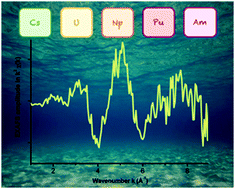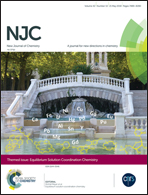Focus on speciation assessment in marine radiochemistry using X-ray absorption spectroscopy
Abstract
The solubility, migration behavior and bioavailability of radionuclides in the marine environment strongly depend on their speciation. This focus article reviews the state-of-the-art and recent advances in the determination of radionuclide speciation in seawater, which is still challenging because of the very high ionic strength of the medium associated with ultra-trace concentrations of these elements in the oceans. In particular, we have highlighted the contribution and usefulness of synchrotron-based techniques such as X-ray absorption spectroscopy. Within this scope, we overview some major radionuclides in seawater, their natural or anthropogenic origin, and their reactivity and natural concentrations. We outline the theoretical speciation models currently used, based on thermodynamic stability constants, and compare them to published experimental data recently obtained from spectroscopic investigation of radionuclides in natural seawater samples. Finally, we discuss some leading perspectives on radionuclide speciation using X-ray absorption spectroscopy in environmental samples at concentrations that must deal with spectroscopy detection limits.

- This article is part of the themed collection: Equilibrium Solution Coordination Chemistry


 Please wait while we load your content...
Please wait while we load your content...